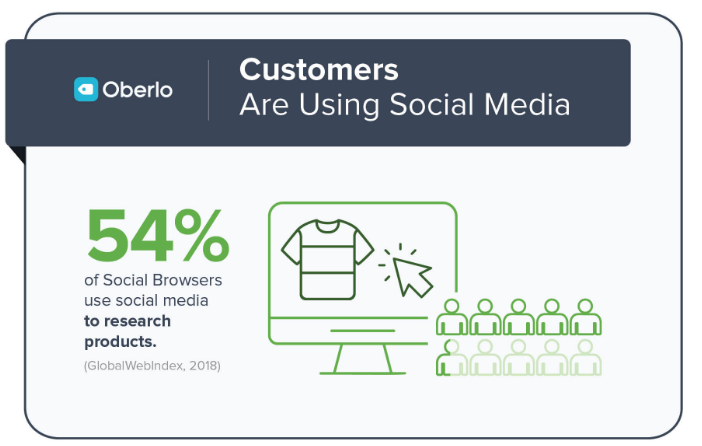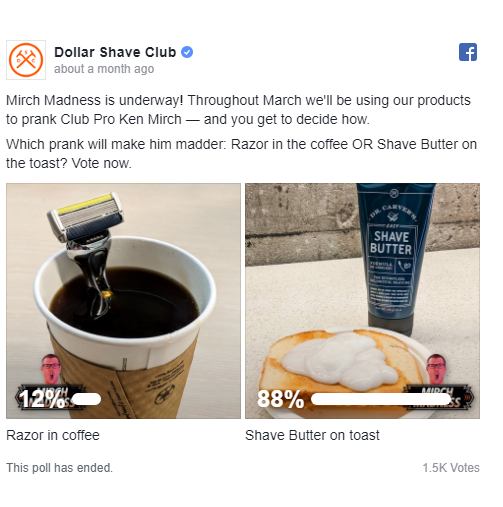If you’re operating an e-commerce platform or working in PR or marketing, you probably know how crucial it is to acquire your customers’ feedback on your products and services.
Almost 95% of customers read reviews before they make an online purchase, according to Spiegel Research Center.
Buyers are willing to spend 31% extra on a business with excellent reviews, according to Qualtrics, while 94% reported that an online review had influenced them to stay away from a business.
How can you gain more feedback from your customers and prove your brand authority?
Posting powerful content, leveraging social media, responding to reviews thoughtfully, sending post-purchase email requests, and offering incentives for leaving a review are five proven ways.
Let’s dive into the points so that you can implement them in proving your brand authority.
1. Post powerful content regularly
Posting powerful content regularly is one of the most effective ways to get feedback and build brand credibility online. Posting compelling content makes you visible and accessible to your audience, and encourages customers to communicate with your brand. Companies who blog receive 97% more links to their website, according to Seotribunal.com.
Consider creating a blog in your niche and posting fresh content to reach out to your audience and show your expertise in your field.
Ensure that your content is relevant, engaging, grammatically correct, typo-free, and that it communicates the answers your readers are seeking.
Stick with basic commenting systems to make it easy for your readers to comment, and ask a leading question at the end of each article. It will get people thinking. Or start the discussion yourself.
Regular blogging is time-consuming and stressful but will keep your readers interested and looking forward to more. You can also consider hiring freelance writers to create content for you. Upwork, Guru.com, and Freelancer.com are three sites to find qualified writers.
The first step should be to determine what type of content gets maximum traction and most views and shares – and then develop similar content.
As per OKDork’s data, blog posts are among the most shared content online after infographics.
Studies also reveal that 63% of readers deem blogs with multiple authors to be more credible.
2. Leverage social media
Social media platforms like Facebook, Twitter, or Instagram are an excellent channel to post specific information about your niche. There may be more potential customers on social media than you think. It has been found that 54% of social media users are browsing to research products.
And 71% of shoppers who have had a positive experience with a brand on social media are likely to recommend the brand to their friends and family.
You can ask your followers to leave feedback on review platforms of their choice. For instance, you can create polls, like one created by Dollar Shave Club on Facebook, using humor to highlight your products while engaging the audience.
Or use Instagram stories to collect feedback with stickers just like Starbucks did. Just remember to keep your question short and direct.
3. Respond to reviews thoughtfully
Buyers want to feel valued and wish to have a personal shopping experience with brands.
As per reports, on average, 71% of shoppers express some level of frustration when their shopping experience with a brand is not personal, while businesses see an average boost of 20% in sales when implementing personalized marketing strategies.
No matter how busy you are, if your clients take the time to provide feedback, it’s important to respond. It will give them the impression that the business truly cares about consumer sentiment and prompt new customers to share their own experiences.
It only takes 5-10 minutes to thank reviewers with short personal sentences that speak to what they wrote. Don’t just leave a thumbs up or a boilerplate thank you note. Personalize the response.
If you receive negative feedback, it’s best to respond quickly, and acknowledge your mistake. Be courteous while explaining your view and offer immediate compensation. It’s usually best to continue the conversation on a private channel like email or direct messages.
4. Send post-purchase email requests
Follow-up emails requesting a review after a customer makes a purchase can produce about an 8% response rate, as indicated in research by Yotpo. For best results, send the follow-up email within a week of the purchase. Within that timeframe, you can leverage those good feelings that shopping releases.
Again, Yotpo reveals customers are likely to respond on Saturday.
You can also use email marketing tools to offer your customers a quick and easy way to give feedback. Usually, such tools allow you to quickly respond to your customers through a feedback dashboard.
5. Offer incentives for leaving a review
You can offer coupons, discounts, and other rewards to encourage customers to leave reviews. The rewards can increase repeat sales as well.
Consider loyalty programs to track and distribute incentives. You can incorporate points for feedback and sharing feedback on social media.
Or conduct contest entries as an offer in exchange for a review.
Some brands also offer social mentions as rewards, which customers usually appreciate.
Whatever incentive you choose, decide on one that is relevant to your organization to increase chances that customers will respond to your offers.
According to PeoplePulse, on average, you will see a 10-15% increase in customer responses if you offer an incentive.
Many companies have adopted this strategy and have found success. For instance, Zappos hands out 100 points or about $10 credit to their customers for writing a review.
Bottom Line: Obtaining more reviews to prove your brand authority does take effort, but it’s worth the time, labor, and resources. Following these tips will help you obtain more feedback and help establish your brand’s credibility. Remember to ask for feedback in a timely manner and respond personally to feedback. That will make your customers feel valued.
Gaurav Belani is a senior SEO and content marketing analyst at Growfusely, a content marketing agency specializing in content and data-driven SEO. He has more than seven years of experience in digital marketing. He likes sharing his knowledge in a wide range of domains ranging from marketing to human capital management and workday adoption. His work is featured in several authoritative business publications. Connect with him on LinkedIn and Twitter at @belanigaurav.










